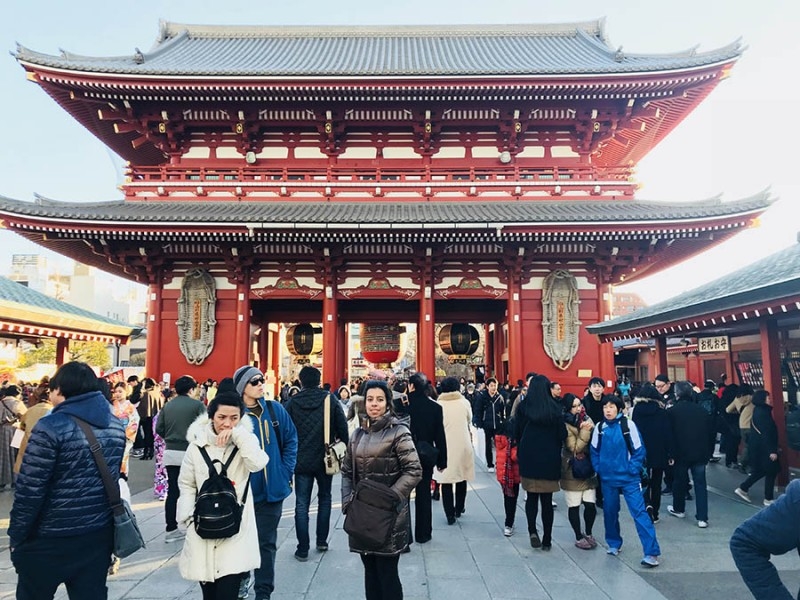
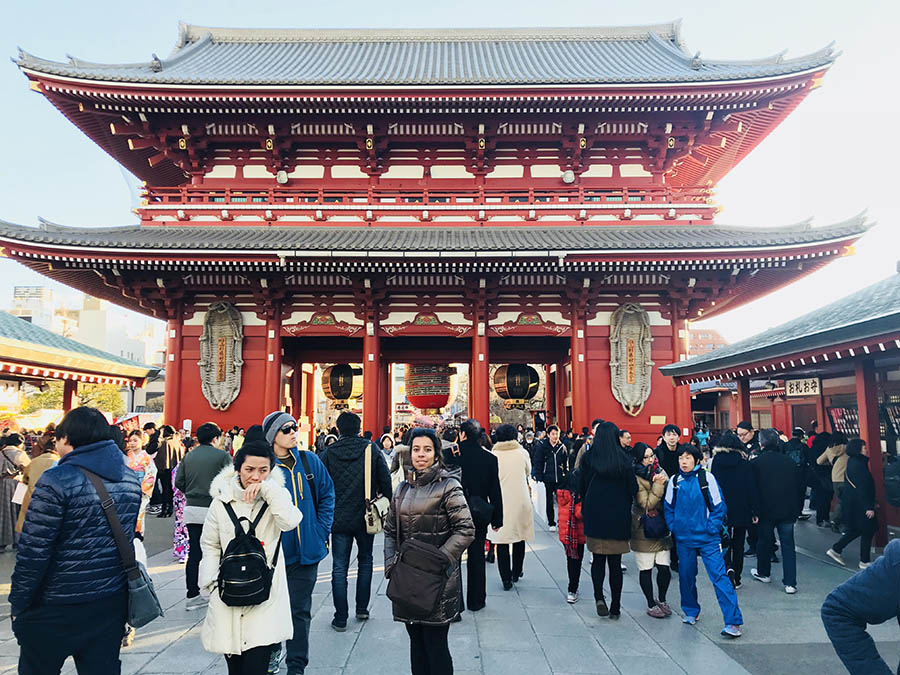 Fizza Hassan, center, stands in front of the Sensoji Buddhist Temple in Tokyo's Asakusa neighborhood. Hassan, a civil engineering master's student, traveled to the city with her classmates from the Origami Engineering course she took at Georgia Tech in the fall taught by Glaucio Paulino. The class visited attractions around Japan and learned about origami principles from Paulino's collaborators in the country. (Photo Courtesy: Fizza Hassan) |
When you want to learn about origami, what better way than to go meet the people and experience the culture responsible for its creation?
That’s exactly what about a dozen Georgia Tech students who took Glaucio Paulino’s Origami Engineering course in the fall did. Just after the conclusion of fall classes, they boarded a flight to Japan to spend a week together deepening their understanding of origami principles and its engineering applications.
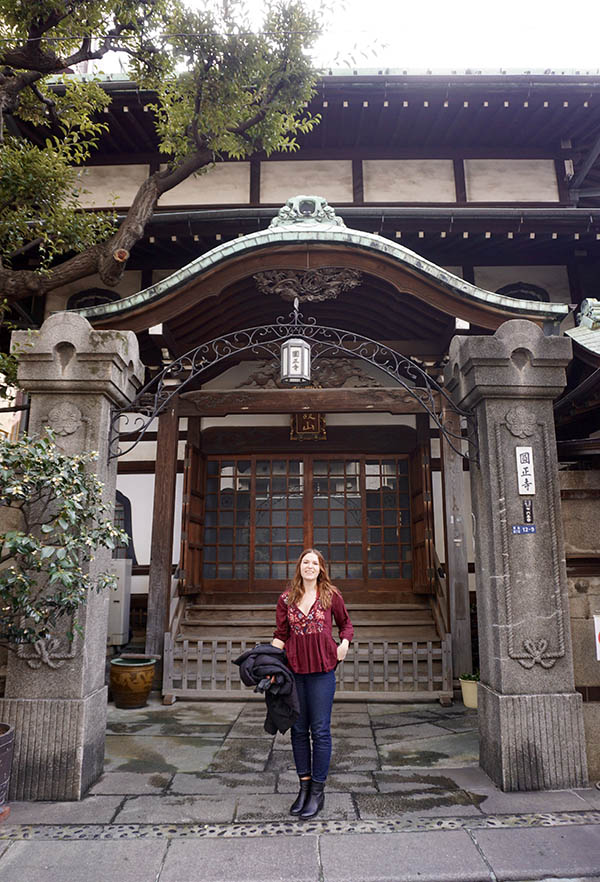 Chemical engineering major Lisa Smith in Tokyo in December. She traveled with her Origami Engineering class after the fall semester to Japan to learn more about the ancient art of paper folding and its engineering applications. Their week abroad included tours, lectures, cultural immersion, and lots of food. (Photo Courtesy: Lisa Smith) |
“Usually you study things in class, you do assignments and do projects and that’s about it,” said Fizza Hassan, a civil engineering master’s student. “We have actually lived the experience, how [origami] evolved into what we study in books right now.”
“[Traveling to Japan] made us understand that origami is not just fun, not just paper art. It is much more than that,” she said. “We touched the roots, basically, of origami. Rather than learning from different sources, we actually went to the source.”
The traveling group — and the class itself — included students from majors across campus, which fourth-year chemical engineering student Lisa Smith said was a unique experience.
“I honestly forget what everyone’s major was in my group, but they were all different. It brought a lot of perspectives into the group, which was pretty cool,” Smith said. “It was nice not seeing faces that I see in my other classes and getting to meet new people, especially on the trip. I actually got to know the people in the class.”
The trip to Japan wasn’t a required element of the class, a brand-new course offering that’s part of the global engineering leadership minor curriculum but was open to any interested students. Paulino, the Raymond Allen Jones Chair in the School of Civil and Environmental Engineering, designed the course to appeal to a broad range of interests.
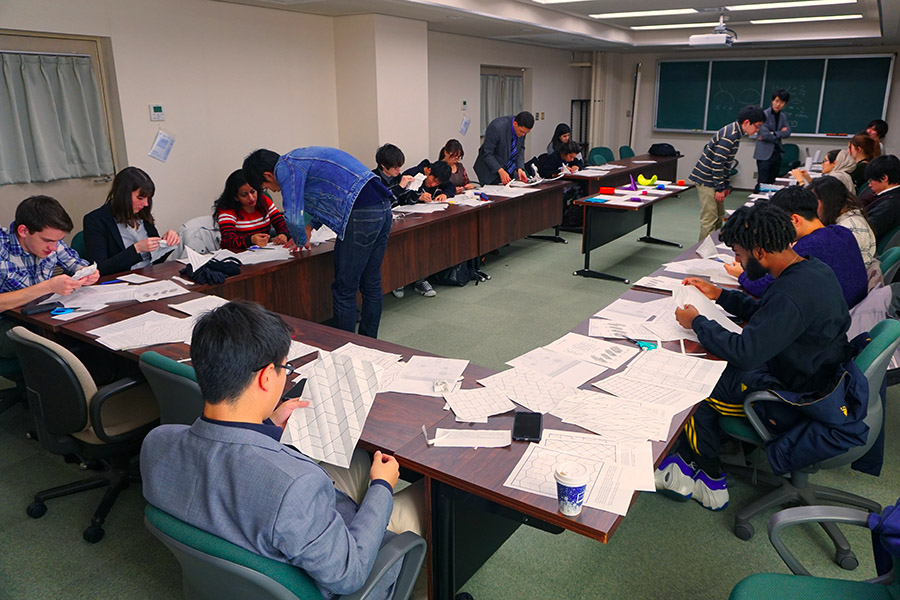 Students from Georgia Tech learn about the origins of some origami patterns from University of Tokyo Professor Tomohiro Tachi and his students. The group spent a week after the fall semester exploring Japanese culture and deepening their knowledge of origami engineering with Professor Glaucio Paulino. (Photo Courtesy: Larissa Novelino) |
“You had people from computer science, electrical engineering, physics, industrial engineering, biomedical engineering, biology, architecture — I mean the whole amalgam of students made it so worthwhile,” Hassan said. “Everyone shared their own experience.”
The students who traveled to Japan were treated to a week’s worth of cultural immersion, lectures, tours, and an origami-making contest (Hassan’s team won the compression part of the contest for their design; Smith’s team won for having the best design in the tension tests). Perhaps most remarkable, they met Koryo Miura, creator of the Miura fold students had learned about extensively in Atlanta.
“He actually showed us his first design, which he made … for NASA,” Hassan said. “He said, we didn’t have software, we just had our hands — no predictions as to what the design would turn out to be. You can’t have that experience sitting in a classroom.”
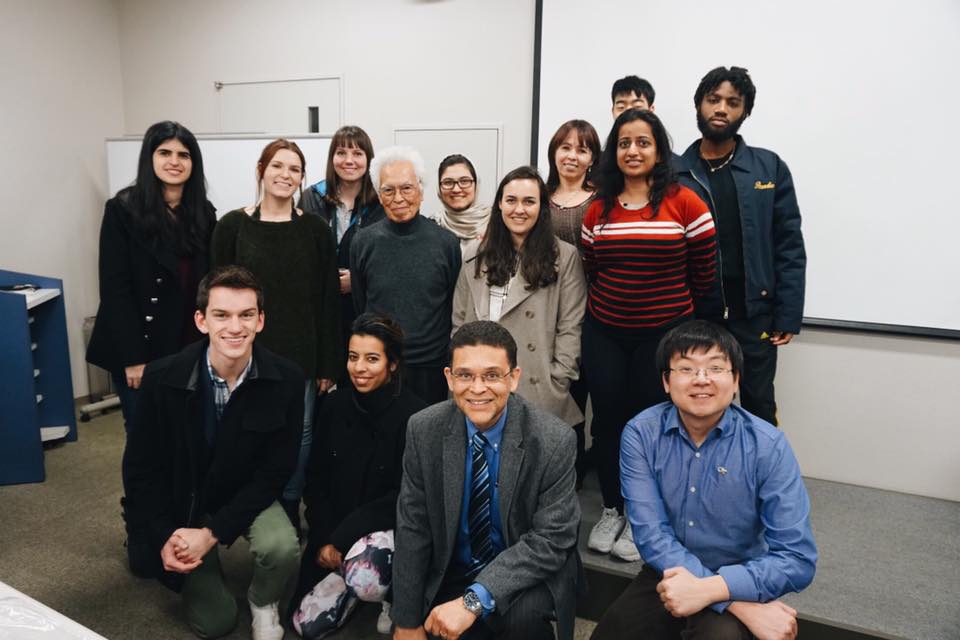 The Origami Engineering class with Koryo Miura, center, the creator of the Miura-ori pattern that was the main design studied during the class. Miura's pattern creates a series of parallelograms that can fold and unfold in a single motion. (Photo Courtesy: Larissa Novelino) |
Hassan said the course has her thinking about ways to incorporate origami concepts in her research if she decides to pursue a Ph.D.
Smith said she has started to see origami everywhere.
“I see applications of origami every day now just walking around, like on buildings or bags or just random things, and I think, ‘that’s origami.’”
Learning about the mathematical principles behind origami folds and how engineers can use the designs and optimize their properties was far outside Smith’s usual range of chemical engineering courses. She said it was challenging, but she enjoyed the experience.
“The professor is really key on what makes or breaks a good class, and [Paulino] was awesome and just so enthusiastic about the subject, which made it a lot easier for me to get engaged,” Smith said. “When you are more engaged in a class, it is just easier, whether or not the material is easy.”
Both Smith and Hassan had traveled to other countries — Hassan is an international student from Pakistan, in fact — but neither had experienced traveling with their professor and classmates. They both said the trip left them wanting to learn more about Japanese culture.
“Every day was something special. You want to go back for more,” Hassan said. “Japan is so rich.”
| WANT MORE ORIGAMI ENGINEERING?
|
||
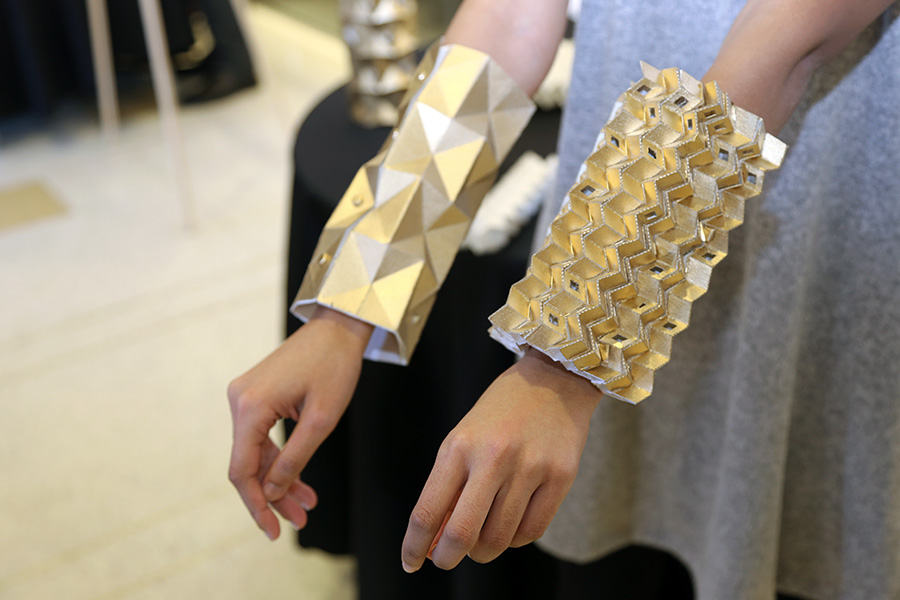 |
||
|
|
||
